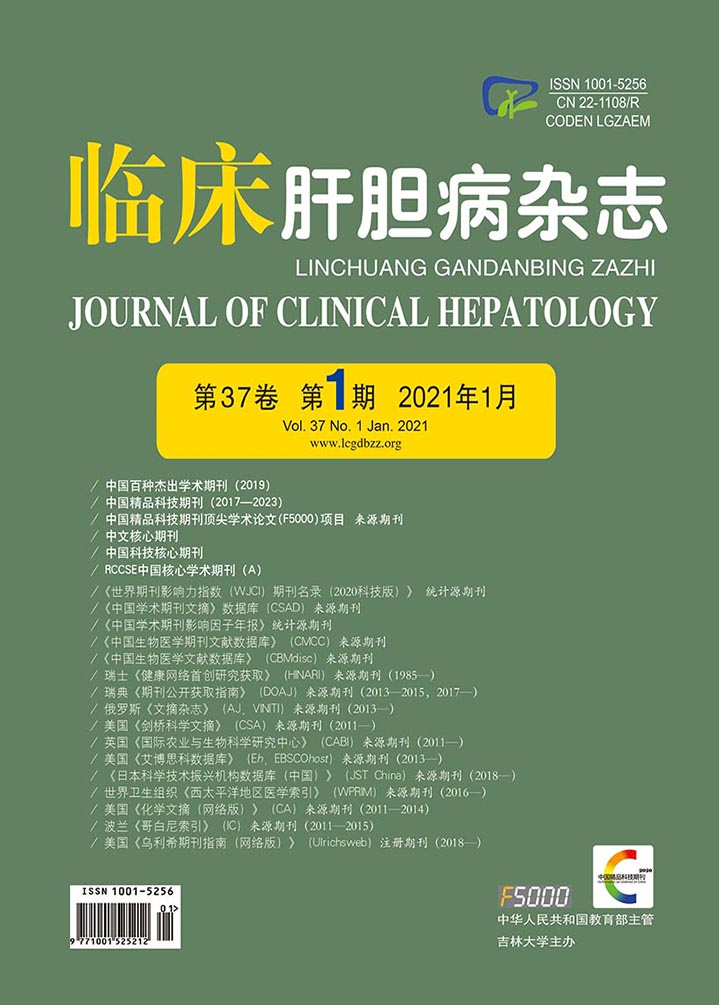| [1] |
|
| [2] |
ZHANG Y, SPRINGFIELD R, CHEN S, et al. Alpha-galcer and iNKT cell-based cancer immunotherapy: Realizing the therapeutic potentials[J]. Front Immunol, 2019, 10: 1126. DOI: 10.3389/fimmu.2019.01126 |
| [3] |
BROSSAY L, CHIODA M, BURDIN N, et al. CD1d-mediated recognition of an alpha-galactosylceramide by natural killer T cells is highly conserved through mammalian evolution[J]. J Exp Med, 1998, 188(8): 1521-1528. DOI: 10.1084/jem.188.8.1521 |
| [4] |
MORENO M, MOL BM, von MENSDORFF-POUILLY S, et al. Differential indirect activation of human invariant natural killer T cells by Toll-like receptor agonists[J]. Immunotherapy, 2009, 1(4): 557-570.
|
| [5] |
KITAMURA H, IWAKABE K, YAHATA T, et al. The natural killer T (NKT) cell ligand alpha-galactosylceramide demonstrates its immunopotentiating effect by inducing interleukin (IL)-12 production by dendritic cells and IL-12 receptor expression on NKT cells[J]. J Exp Med, 1999, 189(7): 1121-1128. DOI: 10.1084/jem.189.7.1121 |
| [6] |
NAIR S, DHODAPKAR MV. Natural killer T cells in cancer immunotherapy[J]. Front Immunol, 2017, 8: 1178. DOI: 10.3389/fimmu.2017.01178 |
| [7] |
GANSUVD B, HAGIHARA M, YU Y, et al. Human umbilical cord blood NK T cells kill tumors by multiple cytotoxic mechanisms[J]. Hum Immunol, 2002, 63(3): 164-175. DOI: 10.1016/S0198-8859(01)00382-2 |
| [8] |
CAMERON G, GODFREY DI. Differential surface phenotype and context-dependent reactivity of functionally diverse NKT cells[J]. Immunol Cell Biol, 2018.[Online ahead of print]
|
| [9] |
EBERL G, LEES R, SMILEY ST, et al. Tissue-specific segregation of CD1d-dependent and CD1d-independent NK T cells[J]. J Immunol, 1999, 162(11): 6410-6419.
|
| [10] |
LEE YJ, WANG H, STARRETT GJ, et al. Tissue-specific distribution of iNKT cells impacts their cytokine response[J]. Immunity, 2015, 43(3): 566-578. DOI: 10.1016/j.immuni.2015.06.025 |
| [11] |
KIM CH, JOHNSTON B, BUTCHER EC. Trafficking machinery of NKT cells: Shared and differential chemokine receptor expression among V alpha 24(+)V beta 11(+) NKT cell subsets with distinct cytokine-producing capacity[J]. Blood, 2002, 100(1): 11-16. DOI: 10.1182/blood-2001-12-0196 |
| [12] |
JOHNSTON B, KIM CH, SOLER D, et al. Differential chemokine responses and homing patterns of murine TCR alpha beta NKT cell subsets[J]. J Immunol, 2003, 171(6): 2960-2969. DOI: 10.4049/jimmunol.171.6.2960 |
| [13] |
THOMAS SY, HOU R, BOYSON JE, et al. CD1d-restricted NKT cells express a chemokine receptor profile indicative of Th1-type inflammatory homing cells[J]. J Immunol, 2003, 171(5): 2571-2580. DOI: 10.4049/jimmunol.171.5.2571 |
| [14] |
BANDYOPADHYAY K, MARRERO I, KUMAR V. NKT cell subsets as key participants in liver physiology and pathology[J]. Cell Mol Immunol, 2016, 13(3): 337-346. DOI: 10.1038/cmi.2015.115 |
| [15] |
RACANELLI V, REHERMANN B. The liver as an immunological organ[J]. Hepatology, 2006, 43(2 Suppl 1): s54-s62.
|
| [16] |
WISSE E. An electron microscopic study of the fenestrated endothelial lining of rat liver sinusoids[J]. J Ultrastruct Res, 1970, 31(1): 125-150.
|
| [17] |
GEISSMANN F, CAMERON TO, SIDOBRE S, et al. Intravascular immune surveillance by CXCR6 + NKT cells patrolling liver sinusoids[J]. PLoS Biol, 2005, 3(4): e113. DOI: 10.1371/journal.pbio.0030113 |
| [18] |
KEE JY, ITO A, HOJO S, et al. Chemokine CXCL16 suppresses liver metastasis of colorectal cancer via augmentation of tumor-infiltrating natural killer T cells in a murine model[J]. Oncol Rep, 2013, 29(3): 975-982. DOI: 10.3892/or.2012.2185 |
| [19] |
|
| [20] |
JACOB AI, GOLDBERG PK, BLOOM N, et al. Endotoxin and bacteria in portal blood[J]. Gastroenterology, 1977, 72(6): 1268-1270. DOI: 10.1016/S0016-5085(77)80025-5 |
| [21] |
DOHERTY DG. Immunity, tolerance and autoimmunity in the liver: A comprehensive review[J]. J Autoimmun, 2016, 66: 60-75. DOI: 10.1016/j.jaut.2015.08.020 |
| [22] |
SINGH AK, GAUR P, DAS SN. Natural killer T cell anergy, co-stimulatory molecules and immunotherapeutic interventions[J]. Hum Immunol, 2014, 75(3): 250-260. DOI: 10.1016/j.humimm.2013.12.004 |
| [23] |
JIANG X, SHIMAOKA T, KOJO S, et al. Cutting edge: Critical role of CXCL16/CXCR6 in NKT cell trafficking in allograft tolerance[J]. J Immunol, 2005, 175(4): 2051-2055. DOI: 10.4049/jimmunol.175.4.2051 |
| [24] |
HUANG W, HE W, SHI X, et al. The role of CD1d and MR1 restricted T cells in the liver[J]. Front Immunol, 2018, 9: 2424. DOI: 10.3389/fimmu.2018.02424 |
| [25] |
KANEKO Y, HARADA M, KAWANO T, et al. Augmentation of Valpha14 NKT cell-mediated cytotoxicity by interleukin 4 in an autocrine mechanism resulting in the development of concanavalin A-induced hepatitis[J]. J Exp Med, 2000, 191(1): 105-114. DOI: 10.1084/jem.191.1.105 |
| [26] |
|
| [27] |
MARICIC I, SHENG H, MARRERO I, et al. Inhibition of type I natural killer T cells by retinoids or following sulfatide-mediated activation of type Ⅱ natural killer T cells attenuates alcoholic liver disease in mice[J]. Hepatology, 2015, 61(4): 1357-1369. DOI: 10.1002/hep.27632 |
| [28] |
KAKIMI K, GUIDOTTI LG, KOEZUKA Y, et al. Natural killer T cell activation inhibits hepatitis B virus replication in vivo[J]. J Exp Med, 2000, 192(7): 921-930. DOI: 10.1084/jem.192.7.921 |
| [29] |
YE L, WANG X, WANG S, et al. CD56 + T cells inhibit hepatitis C virus replication in human hepatocytes[J]. Hepatology, 2009, 49(3): 753-762. DOI: 10.1002/hep.22715 |
| [30] |
ZAHRAN AM, ABDEL-MEGUID MM, ASHMAWY AM, et al. Frequency and implications of natural killer and natural killer T cells in hepatocellular carcinoma[J]. Egypt J Immunol, 2018, 25(2): 45-52.
|
| [31] |
KENNA T, GOLDEN-MASON L, PORCELLI SA, et al. NKT cells from normal and tumor-bearing human livers are phenotypically and functionally distinct from murine NKT cells[J]. J Immunol, 2003, 171(4): 1775-1779. DOI: 10.4049/jimmunol.171.4.1775 |
| [32] |
XIAO YS, GAO Q, XU XN, et al. Combination of intratumoral invariant natural killer T cells and interferon-gamma is associated with prognosis of hepatocellular carcinoma after curative resection[J]. PLoS One, 2013, 8(8): e70345. DOI: 10.1371/journal.pone.0070345 |
| [33] |
MIYAGI T, TAKEHARA T, TATSUMI T, et al. CD1d-mediated stimulation of natural killer T cells selectively activates hepatic natural killer cells to eliminate experimentally disseminated hepatoma cells in murine liver[J]. Int J Cancer, 2003, 106(1): 81-89. DOI: 10.1002/ijc.11163 |
| [34] |
YANAGISAWA K, SEINO K, ISHIKAWA Y, et al. Impaired proliferative response of V alpha 24 NKT cells from cancer patients against alpha-galactosylceramide[J]. J Immunol, 2002, 168(12): 6494-6499. DOI: 10.4049/jimmunol.168.12.6494 |
| [35] |
MARGALIT M, SHIBOLET O, KLEIN A, et al. Suppression of hepatocellular carcinoma by transplantation of ex-vivo immune-modulated NKT lymphocytes[J]. Int J Cancer, 2005, 115(3): 443-449. DOI: 10.1002/ijc.20889 |
| [36] |
BAE EA, SEO H, KIM IK, et al. Roles of NKT cells in cancer immunotherapy[J]. Arch Pharm Res, 2019, 42(7): 543-548. DOI: 10.1007/s12272-019-01139-8 |
| [37] |
FU Y, LIU S, ZENG S, et al. From bench to bed: the tumor immune microenvironment and current immunotherapeutic strategies for hepatocellular carcinoma[J]. J Exp Clin Cancer Res, 2019, 38(1): 396. DOI: 10.1186/s13046-019-1396-4 |
| [38] |
GEBREMESKEL S, CLATTENBURG DR, SLAUENWHITE D, et al. Natural killer T cell activation overcomes immunosuppression to enhance clearance of postsurgical breast cancer metastasis in mice[J]. Oncoimmunology, 2015, 4(3): e995562. DOI: 10.1080/2162402X.2014.995562 |
| [39] |
KO HJ, LEE JM, KIM YJ, et al. Immunosuppressive myeloid-derived suppressor cells can be converted into immunogenic APCs with the help of activated NKT cells: An alternative cell-based antitumor vaccine[J]. J Immunol, 2009, 182(4): 1818-1828. DOI: 10.4049/jimmunol.0802430 |
| [40] |
HIX LM, SHI YH, BRUTKIEWICZ RR, et al. CD1d-expressing breast cancer cells modulate NKT cell-mediated antitumor immunity in a murine model of breast cancer metastasis[J]. PLoS One, 2011, 6(6): e20702. DOI: 10.1371/journal.pone.0020702 |
| [41] |
BAE EA, SEO H, KIM BS, et al. Activation of NKT cells in an anti-PD-1-resistant tumor model enhances antitumor immunity by reinvigorating exhausted CD8 T cells[J]. Cancer Res, 2018, 78(18): 5315-5326. DOI: 10.1158/0008-5472.CAN-18-0734 |
| [42] |
HECZEY A, LIU D, TIAN G, et al. Invariant NKT cells with chimeric antigen receptor provide a novel platform for safe and effective cancer immunotherapy[J]. Blood, 2014, 124(18): 2824-2833. DOI: 10.1182/blood-2013-11-541235 |
| [43] |
YONG CSM, DARDALHON V, DEVAUD C, et al. CAR T-cell therapy of solid tumors[J]. Immunol Cell Biol, 2017, 95(4): 356-363. DOI: 10.1038/icb.2016.128 |








 本站查看
本站查看





 DownLoad:
DownLoad: